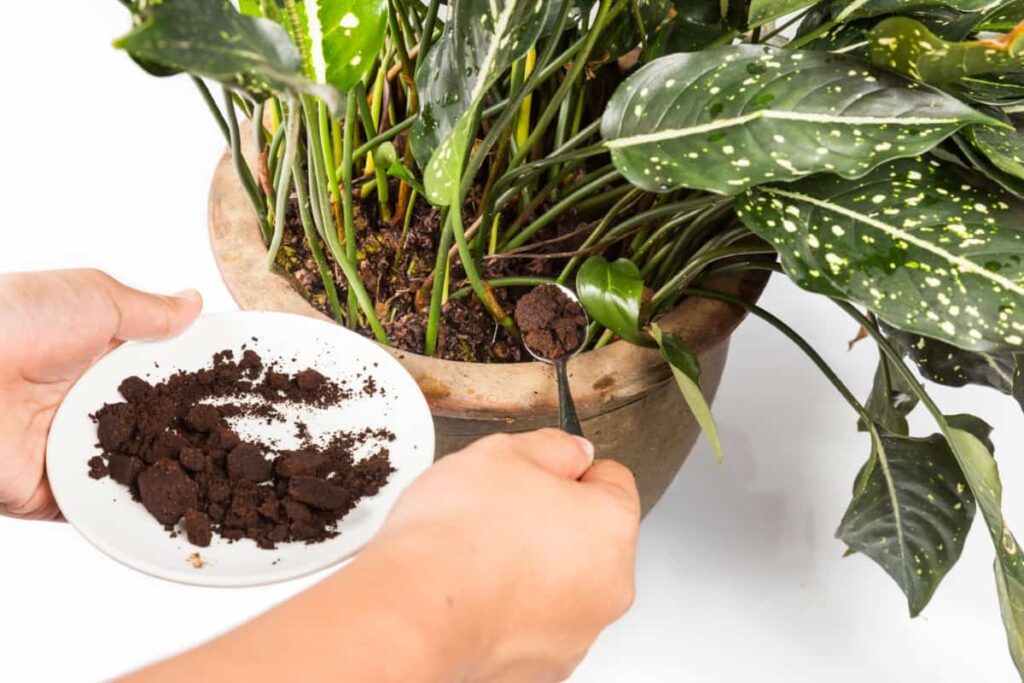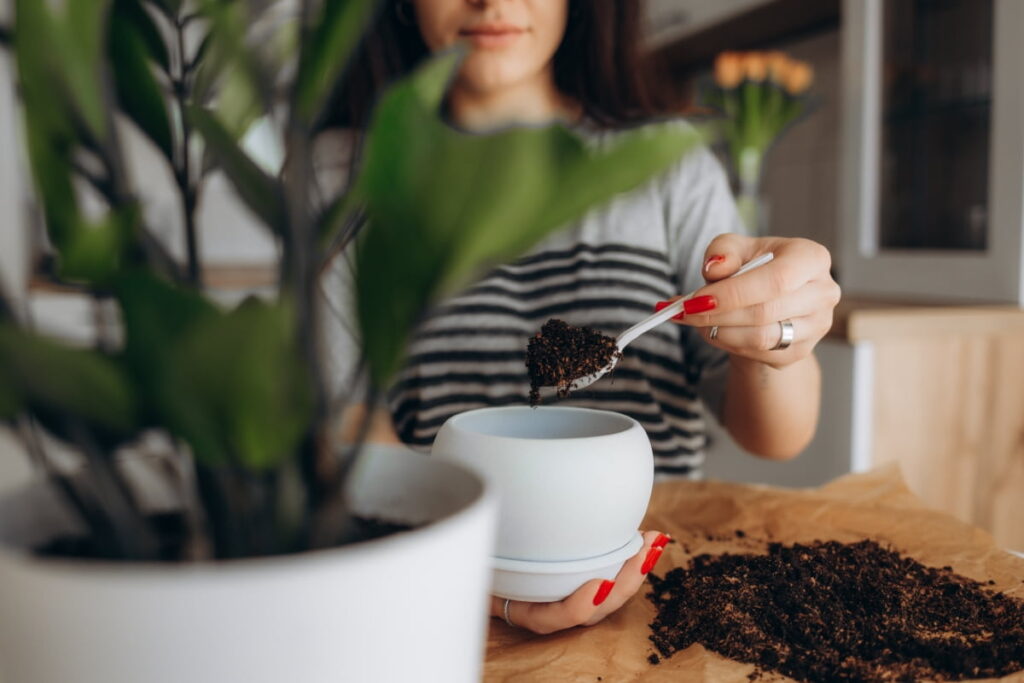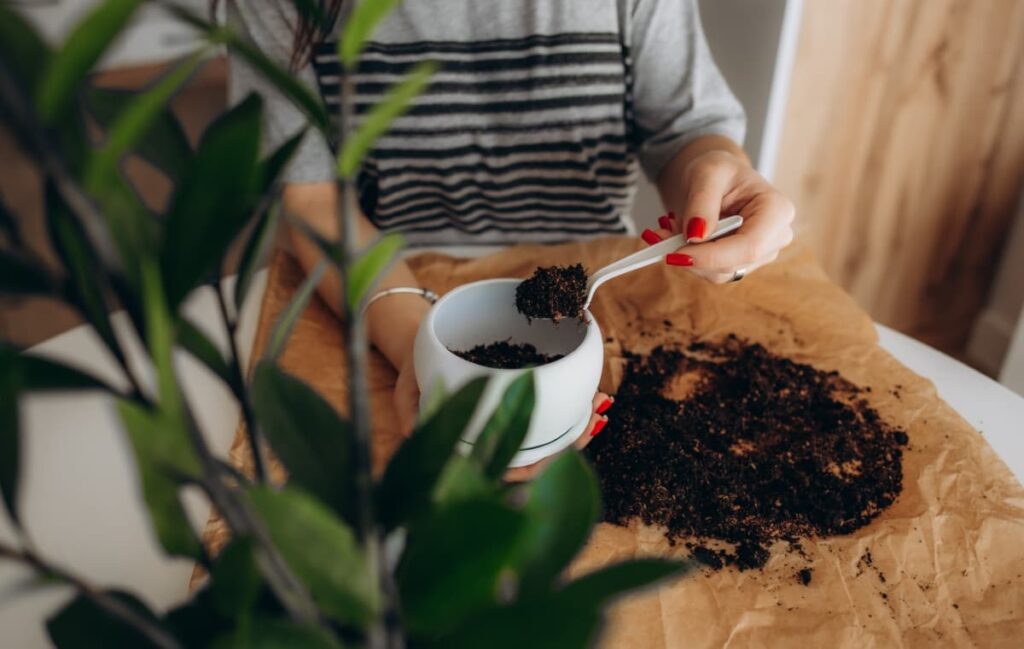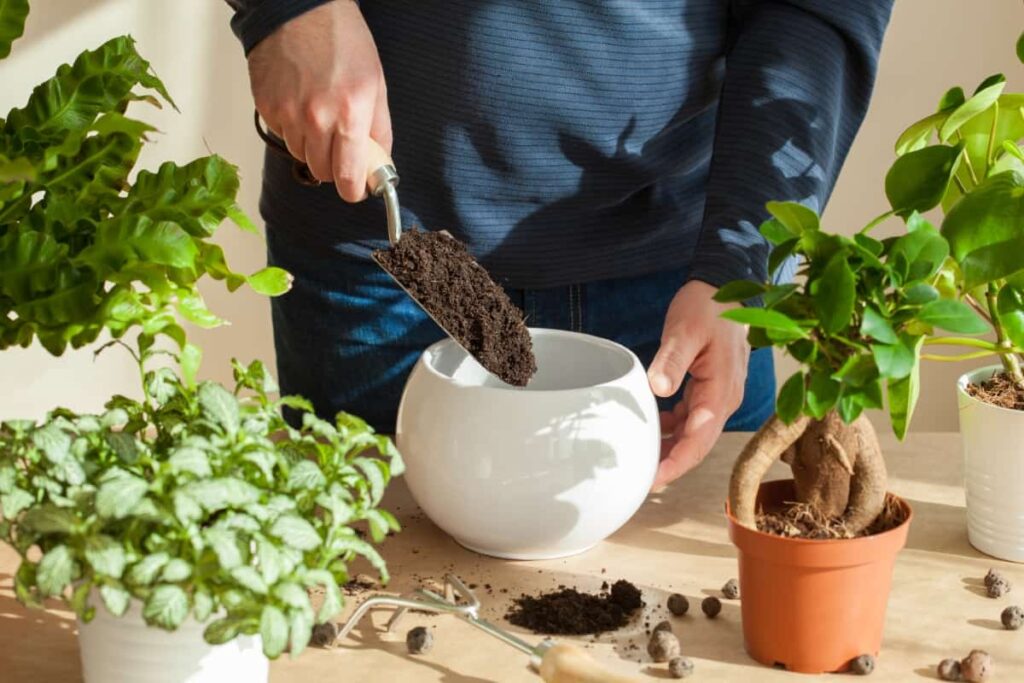Coffee grounds are packed with nutrients like nitrogen, potassium, and phosphorus that can help enhance the growth of acidic soil-loving plants such as azaleas, rhododendrons, blueberries, and hydrangeas. These rich, dark granules are packed with nutrients that can benefit your plants.

Understanding Coffee Grounds as a Soil Amendment
Coffee grounds improve the soil’s structure and help retain moisture by adding organic material. Their nitrogen content also benefits plant growth, making them an excellent natural fertilizer. Coffee grounds are rich in potassium and phosphorus nutrients, contributing to overall soil health.
Their decomposition process gradually releases these valuable nutrients into the soil, providing long-term benefits for your plants. Additionally, coffee grounds attract earthworms, which aerate the soil and enhance nutrient circulation, creating a thriving ecosystem beneath the surface of your garden.
Benefits of Coffee Grounds for Acid-Loving Plants
The major benefits of using coffee grounds as a natural fertilizer are abundant. They provide essential nutrients like nitrogen, potassium, and phosphorus, and also improve soil structure and promote healthy root growth. Acid-loving plants like rhododendrons, azaleas, blueberries, and hydrangeas thrive in acidic soil conditions. Coffee grounds help maintain the optimal pH level for these plants by slightly lowering the soil’s acidity. This encourages vibrant blooms, lush foliage, and overall plant vigor.
How to Apply Coffee Grounds to Your Plants
Applying coffee grounds to your plants is simple and beneficial. After brewing your morning cup, save the used coffee grounds. Before adding them to your plants, let the coffee grounds dry out a bit.
In case you missed it: The Best Soil Mix for Snake Plants: How to Mix Your Own Snake Plant Soil

Once dried, sprinkle a thin layer of coffee grounds around the plant base. Be mindful not to pile the grounds too close to plant stems, as they can create a barrier that may prevent water from reaching the roots effectively. Otherwise, mix coffee grounds into the soil when planting new shrubs or flowers. This way, as they decompose slowly over time, they will continuously release nutrients and improve soil structure for healthier plant growth.
Monitoring Soil Health After Coffee Ground Application
After applying coffee grounds to your acid-loving plants, it’s essential to monitor the soil health regularly. This ensures that your plants are thriving in the amended soil. Keep a close eye on any changes in plant growth, leaf color, and overall appearance. Check the soil’s moisture levels consistently to prevent over- or under-watering. Coffee grounds can affect water retention in the soil, so adjusting your watering routine accordingly is crucial.
Observe for any signs of nutrient deficiencies or excesses in your plants. If you notice yellow plant leaves or stunted growth, it might indicate an imbalance that needs attention. Regularly inspect the pH levels of your soil using a testing kit. Coffee grounds can alter soil acidity over time, so maintaining the optimal pH range for acid-loving plants is key for their well-being.
Mixing Coffee Grounds with Other Organic Matter
By combining coffee grounds with materials like compost, leaf mold, or straw, you create a nutrient-rich blend that plants love. This mix enhances soil structure and promotes beneficial microbial activity underground. It also helps retain moisture and improves drainage in the soil. Experimenting with different ratios of coffee grounds and organic material allows you to tailor the blend to your plant’s needs. Whether you’re brewing a batch of azaleas or blueberries, finding the right balance is key to optimal growth.
The Impact of Coffee Grounds on Soil pH
Coffee grounds can significantly impact the pH of soil, especially for acid-loving plants. When coffee grounds break down, they release compounds that can slightly lower the soil’s pH. This acidity is beneficial for plants like blueberries, azaleas, and rhododendrons that thrive in acidic environments.
In case you missed it: How to Fix Spider Plant Leaf-Related Problems: Natural and Organic Remedies

It’s essential to monitor your soil pH regularly when coffee grounds are used as a soil amendment. While coffee grounds do add acidity to the soil, it’s important not to overdo it. Using too many coffee grounds can make the soil too acidic, which may harm non-acid-loving plants and affect nutrient availability for all plant types in your garden.
Frequency and Quantity: Best Practices
You want to find the right balance that will benefit your plants without overwhelming them. A good practice is to apply a thin layer of coffee grounds around your plants every few weeks. This allows for a steady nutrient release into the soil, promoting healthy growth.
Avoid using too many coffee grounds. Too much can lead to nitrogen buildup in the soil, which might harm your plants instead of helping them thrive. By monitoring how your plants respond to the coffee ground application, you can adjust the frequency and quantity accordingly. It’s all about finding what works best for your specific garden environment and plant needs.
Coffee Grounds for Disease Suppression
Coffee grounds are the best option for providing nutrients to your plants and suppressing diseases that may harm your beloved greenery. When coffee grounds are added to the soil, they contain compounds that have antimicrobial properties. These compounds act as a natural defense mechanism against certain plant diseases, keeping your garden healthy and thriving.
When coffee grounds are applied to the soil, their compounds can help suppress the growth of certain soil-borne pathogens, including bacteria that cause plant diseases. By adding coffee grounds to your gardening routine, you’re not only enriching the soil but also creating an environment that is less conducive to harmful pathogens.
Composting Coffee Grounds for Garden Use
Composting coffee grounds is simple yet incredibly rewarding. Mix coffee grounds with grass clippings, vegetable scraps, or dry leaves to create a nutrient-rich blend that will nourish your plants from the ground up.
In case you missed it: Coffee Cultivation Information Guide

Composting coffee grounds is the best way to recycle waste and enrich your garden soil. Coffee grounds are rich in nitrogen levels, an important nutrient for plant growth. As coffee grounds break down over time in the compost pile, they release nitrogen into the soil, promoting healthy growth and vibrant blooms in your acid-loving plants.
Precautions When Using Coffee Grounds
Firstly, avoid adding too many coffee grounds at once, as this can lead to nitrogen imbalance in the soil. Start with small quantities and increase based on how your plants respond. Additionally, do not use coffee grounds with mold or mildew. These can harm your plants rather than benefit them. Always opt for fresh and clean coffee grounds from a reliable source. Another thing to consider is the type of plants you are feeding with coffee grounds.
Be cautious about using coffee grounds from sources that may have been treated with pesticides or contaminants. If possible, use organic coffee grounds to minimize the risk of harmful chemicals in your garden soil. Moderation is important when using coffee grounds in your garden. Too much of a good thing can sometimes have negative effects on your beloved greenery. Utilizing coffee grounds in gardening can offer numerous benefits, particularly for acid-loving plants. With proper application, coffee grounds can be a valuable addition to your gardening routine and contribute to a thriving and beautiful garden landscape.
- Profitable Village Farming Business Ideas in 2024
- High-Yield Aquaculture: Fast-Growing Fish for Farming
- Effective Fish Pond Construction Techniques for Beginners
- Irrigation and Water Management in Pineapple Farming
- Blossom to Harvest: Mastering Flowering and Pollination in Papaya Farming
- Pig Fattening Essentials: From Selection to Sale for Beginners
- Raising Wagyu Cattle: A Complete Guide for Premium Beef Production
- Soil Types and Their Water Holding Capacity
- Optimizing Irrigation Schedules for Coconut Groves for Enhanced Yield
